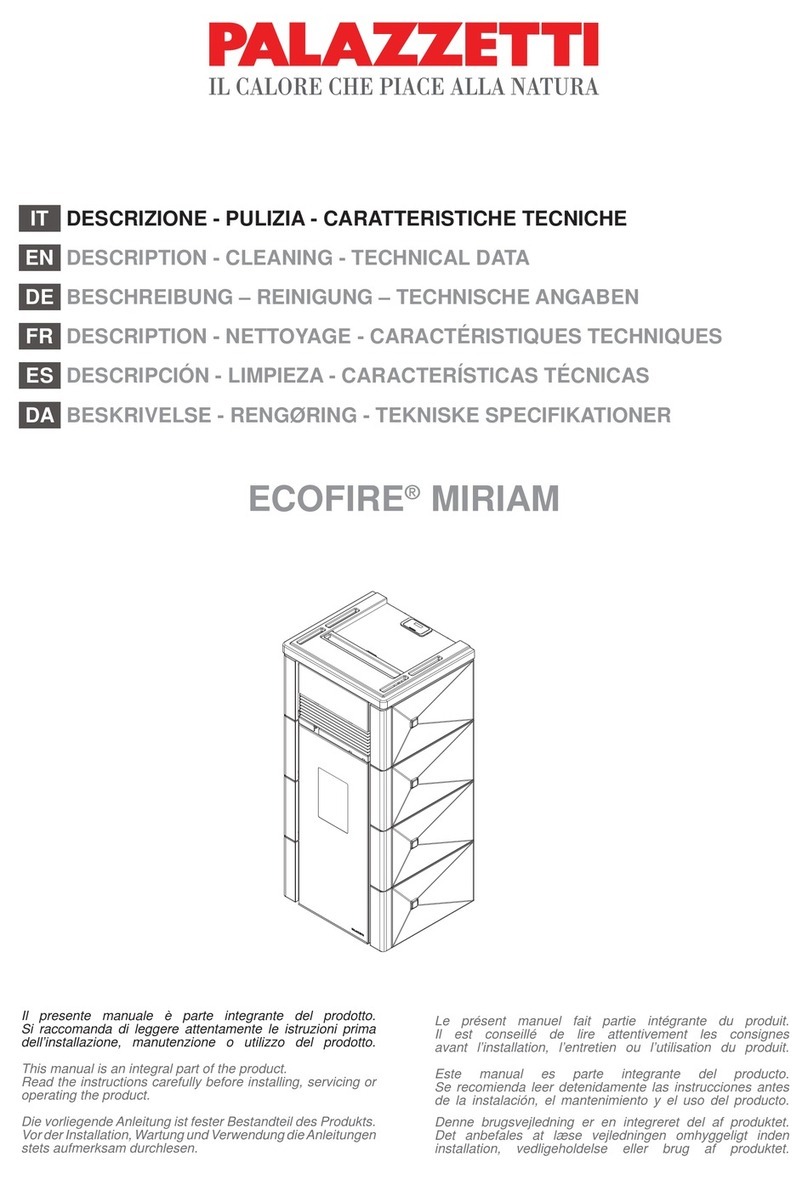Instructions for Use, Maintenance and Installation Pellet boiler PP27 A –G3
© Petrič d.o.o. / 2015 3
TABLE OF CONTENTS
1. THE PURPOSE OF THE INSTRUCTIONS FOR USE.................................................................................... 5
1.1. THE LABEL MEANINGS ...........................................................................................................................5
2. COMPONENTS OF THE BOILER .................................................................................................................. 6
3. THE BASIC REQUIRED STANDARDS.......................................................................................................... 7
4. BOILER SAFETY............................................................................................................................................ 7
5. RESPONSIBILITIES ....................................................................................................................................... 8
5.1. MANUFACTURER’S RESPONSIBILITY ................................................................................................... 8
5.2. USER’S RESPONSIBILITY ....................................................................................................................... 8
5.3. INSTALLERS’ RESPONSIBILITY..............................................................................................................9
6. PICKING THE BOILER UP; TRANSPORTATION AND INSTALLATION.................................................... 10
6.1. PICKING THE BOILER UP...................................................................................................................... 10
6.2. TRANSPORTING AND MOVING THE PELLET BOILER........................................................................ 10
7. INSTALLATION ............................................................................................................................................ 10
7.1. PLACEMENT........................................................................................................................................... 10
7.2. WASTE MANAGEMENT......................................................................................................................... 12
7.3. FLUE GAS EXHAUST............................................................................................................................. 12
7.4. AIR SUPPLY ........................................................................................................................................... 15
7.5. ELECTRICAL GRID CONNECTION........................................................................................................ 16
7.6. CONNECTING THE BOILER TO THE HEATING WATER CIRCUIT...................................................... 17
8. FIRST START OF THE BOILER................................................................................................................... 18
8.1. INSTRUCTIONS FOR PERSON, ANIMAL AND PROPERTY SAFETY.................................................. 18
9. SAFETY WARNING...................................................................................................................................... 19
9.1. SAFETY PRECAUTIONS FOR THE MAINTAINERS.............................................................................. 19
9.2. SAFETY PRECAUTIONS FOR THE USER ............................................................................................ 19
10. INSTRUCTIONS FOR SAFE IGNITION AND CLEANING OF THTHE BOILER.......................................... 20
10.1. INSTRUCTIONS FOR SAFE IGNITION.................................................................................................. 20
10.2. REGULAR MAINTENANCE AND CLEANING OF THE BOILER ............................................................ 20
10.3. INSPECTION AND PARTS THAT REQUIRE MAINTENANCE............................................................... 21
10.4. ADDITIONAL MAINTENANCE................................................................................................................ 23
11. IMPORTANT SAFETY DATA ....................................................................................................................... 23
12. FILLING THE PELLET HOPPER.................................................................................................................. 24
13. FUEL............................................................................................................................................................. 25
13.1. ACCEPTABLE FUEL............................................................................................................................... 25
13.2. UNACCEPTABLE FUEL.......................................................................................................................... 25
13.3. PELLET STORAGE................................................................................................................................. 25
14. THE CONTROLLER...................................................................................................................................... 26
14.1. Cautions ............................................................................................................................................... 26
14.2. Recommendations................................................................................................................................... 26
14.3. Keypad .................................................................................................................................................... 27
14.4. Menu structure......................................................................................................................................... 29
14.4.1. Navigating the menus..................................................................................................................... 29
14.5. Setting the clock...................................................................................................................................... 30
14.6. Setting the temperature........................................................................................................................... 30
14.7. Setting the operating power..................................................................................................................... 30
14.8. Setting the weekly programs ................................................................................................................... 31
14.9. Setting the fuel options............................................................................................................................ 32



























